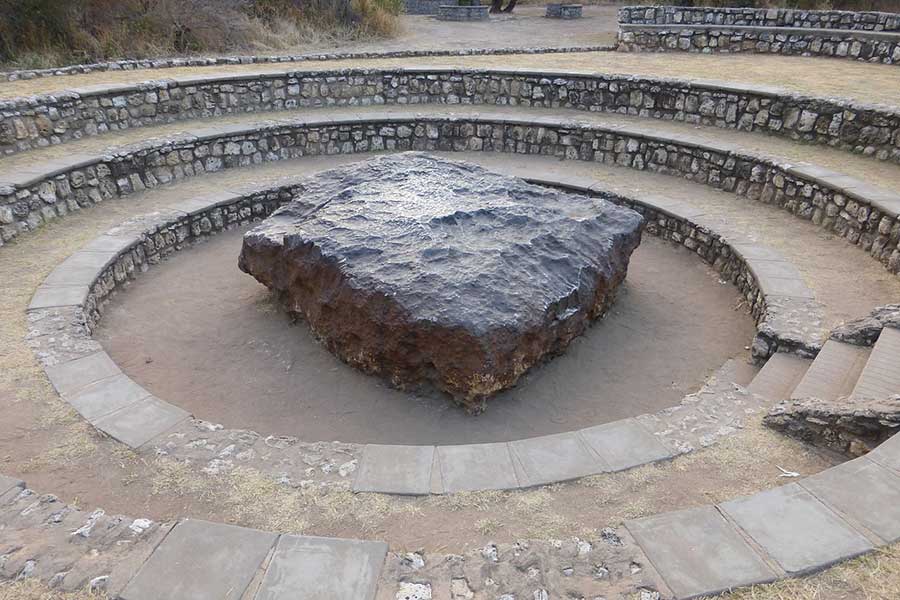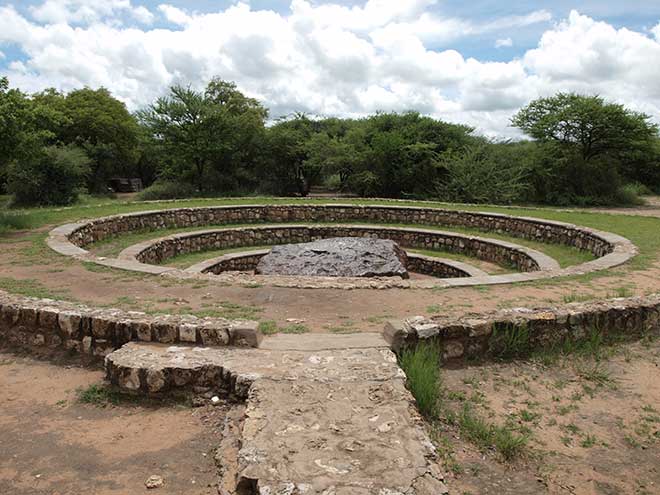Hailing from the cold void of outer space, most meteorites that grace our planet’s surface are gargantuan hunks of metal, exuding a sense of formidable power and beauty. Their typical form is spherical or somewhat oblong, a consequence of their fiery journey through our atmosphere, which melts and shapes them. Their landings, as expected, are nothing short of spectacular, leaving enormous craters as proof of their cosmic voyage. But what if the expected narrative were to be rewritten? Let’s consider for a moment, a meteorite with a surface that deviates from the customary curved morphology. Imagine a celestial rock that bears a flat surface instead.
Might this interstellar traveler, if endowed with a flat surface, interact with Earth’s atmosphere in a manner akin to a stone dancing across the water? Could this altered interaction with our atmosphere significantly reduce the velocity of its descent, thereby cushioning its touchdown? This would indeed challenge the conventional understanding of meteorite impacts, if such a hypothetical meteorite were to land gently, refraining from the dramatic entry we usually associate with these cosmic visitors, leaving no trace of a crater.
In this scenario, we have an object that dares to defy the norms of celestial physics, its idiosyncratic properties allowing for a different interpretation of what it means to be a meteorite. This is not mere speculation, as our tale pivots around a real-world example—the enigma of the cosmos, the Hoba meteorite.
The largest meteorite
Embedded in the heart of central Namibia, an intriguing marvel of cosmic heritage lies concealed beneath the arid African soil. This is the enigma that has been dubbed the Hoba meteorite, discovered serendipitously on the farm fittingly named Hoba West, which lent this monumental specimen its name. This farming estate finds its home near Grootfontein, in a corner of the world known more for its earthly natural wonders than its cosmic ones.
This discovery can be traced back to 1920 when a local farmer named Hermanus Brit found himself entwined in a cosmic tale. As he guided his ox across a vast field, plowing the land beneath the scorching African sun, his plow struck a rock that felt different. He tried to excavate it, expecting nothing more than a particularly stubborn field stone. Little did he know, he had just unearthed an ambassador from the cosmos.

The Hoba meteorite is no ordinary space rock; it’s a monolith, a tablet-shaped chunk of iron with flat surfaces on the top and bottom. Its dimensions, approximately three meters square and one meter deep (roughly 9’ x 9’ x 3’) make it resemble an alien artifact rather than a conventional meteorite. This colossal cosmic castaway tips the scales at a staggering 66 tons, making it the largest meteorite ever found as a single piece, a title it still holds.
In terms of composition, the Hoba meteorite consists primarily of 84% iron and 15% nickel, its elemental profile marking it as a unique metallic sentinel from the sky. It is believed that this celestial traveler embarked on its journey to Earth approximately 80,000 years ago. The age of the Hoba itself, as determined by scientists using advanced dating techniques, places its origins between 200 and 400 million years ago. This places the formation of this iron giant within the age of the dinosaurs, serving as a tangible link to a long-forgotten epoch of cosmic history.

In the mid-20th century, New York City’s eminent American Museum of Natural History expressed a keen interest in acquiring the Hoba meteorite, drawn to its unique history and physical enormity. However, the sheer size of the ancient relic presented an insurmountable logistical challenge. The daunting task of extricating and transporting a 66-ton celestial relic across continents was nothing short of Herculean, causing the museum to reluctantly abandon its acquisition plans.
With the escalating risk of vandalism, a protective measure was deemed crucial. Recognizing the significance of this interstellar ambassador, the government of Namibia promptly declared the Hoba meteorite a National Monument in 1955, legally safeguarding it from any potential damage.
Three decades later, in 1987, the owner of Hoba West farm took a decisive step that further ensured the meteorite’s protection and enhanced its accessibility to the public. They generously donated the meteorite and the land it resided on to the state of Namibia. Committed to celebrating and preserving this historical treasure, the government proceeded to establish a comprehensive tourist center at the site.
Visitors now find an area thoughtfully designed for easy access to the Hoba meteorite, complete with a serene garden and a picnic area. The venue not only allows people to witness the majestic meteorite up close but also offers a tranquil spot to immerse themselves in the natural beauty of Namibia.
For those fortunate enough to visit the Hoba meteorite, one can’t help but be moved by the awe-inspiring encounter. Standing atop this massive cosmic artifact, your gaze might naturally drift towards the vast sky, contemplating the monumental journey this celestial behemoth has undertaken. Ponder the dizzying distances it has traversed and the phenomenal cosmic events it has borne witness to in its multi-million-year voyage. It’s a humbling experience, connecting you to the grand narrative of our universe in a uniquely tangible way.


